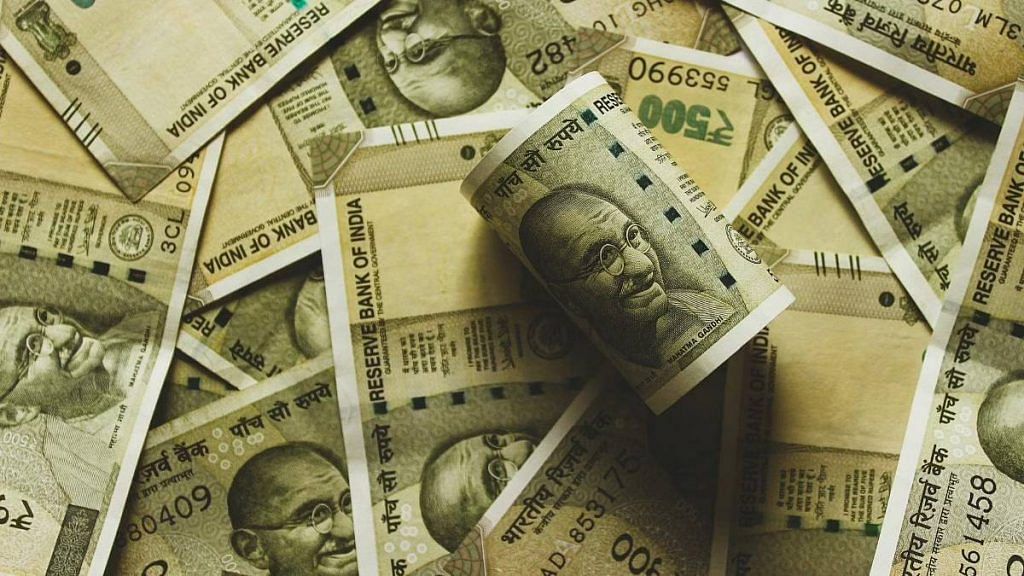New Delhi: Middle-income households in rural and urban India give most of their philanthropic donations in cash to either “religious organisations” or to “beggars”, a study by researchers at Ashoka University has found.
Called ‘How India Gives 2020-2021′, the study — conducted by the global consumer research firm Kantar’s Worldpanel division and Ashoka University’s Centre for Social Impact and Philanthropy — estimates that a total of Rs 23,700 crore was given in donations in 2020-2021.
Forty-four per cent of this came from middle-income income households — the highest share, according to the study.
At Rs 16,600 crore, “religious organisations” got the most donations while the category “beggars” came second at Rs 12,900 crore.
Donations to non-religious organisations such as non-governmental organisations, the PM Cares fund, and hospitals came third at Rs 1.1 thousand crore.
Researchers surveyed over 81,000 households across 18 states in India between October 2020 and September 2021. Respondents were asked questions such as “In the past six months (October 2020 to March 2021), which of the following activities did you or any member of your family participate in,” and “What were the reasons for making the donation/charitable contribution.”
This study is the “first attempt to understand household-giving patterns across geographies, socio-economic groups, demographics, and forms of giving using household surveys”, researchers say in their report.
“It provides a comprehensive, national-level picture of the volume, value and composition of household giving in India,” the study says.
Also Read: India’s rich got richer in Covid but share of philanthropy fell, says report on charity trends
Who donates?
At 52 per cent, the lower-income category formed the largest chunk of those who donated. Their total philanthropic contribution came to 34 per cent of the total giving, the study showed.
Higher-income households contributed to 22 per cent of the total giving, the study showed.
The study found that people between 46 and 60 years were the primary actors making the donation. In addition, men were the key decision-makers in making donations to “family and friends” and “religious organisations” while women took decisions to donate to “household staff” and “beggars”, the study said.
It also showed that the percentage of rural households who made philanthropic donations was slightly higher (88 per cent) as compared to urban India (83 per cent).
Among regions, eastern India (96 pe cent) and northern India (94 per cent) reported higher donations — in other words, “nine out of 10 households were involved in giving in these regions”, the study said.
Who are the recipients?
The key recipients of donations were divided into “religious organisations”, “non-religious organisations”, “household staff’”, “extended family and friends”, and “beggars”.
The study showed that overall, 87 per cent of households reported donating between October 2020 and September 2021.
Sixty-six per cent of all donations went to “religious organisations”, with 60 per cent of urban households and 66 per cent of rural households making contributions, the study showed.
A close second category of recipients was “beggars” — who received donations from 52 per cent of urban households and 66 per cent of rural households.
The study also showed that while trends in urban and rural India don’t differ significantly, the overall percentage of households giving to “religious organisations” and to “beggars” is higher in rural households, while those giving donations to “non-religious organisations” and “extended family and friends” is higher in urban households.
It found that high-value cash donations — that is, donations above Rs 10,000, between Rs 5,000 and 10,000, and between Rs 1,001 and 5,000 — were mainly made to “family and friends” and to “household staff”.
The lowest value of cash donations (under Rs 100) were made mainly to “beggars”, while slightly larger amounts (between Rs 101 and Rs 300, and between Rs 301 and Rs 500) were given to “religious organisations” and “non-religious organisations”.
Seven per cent reported donating in kind, such as food, clothes or furniture, or “volunteering services”, the study said.
Religious beliefs, the need and desire to support those in financial distress, and family traditions of giving were reported as the most common reasons for giving.
The most common motivation behind donating to ‘“religious organisations” was family traditions that encouraged giving on special or auspicious occasions and festivals, the study said.
(Edited by Uttara Ramaswamy)
Also Read: Why India’s wealthy happily donate to god and govt but loathe helping needy and poor
